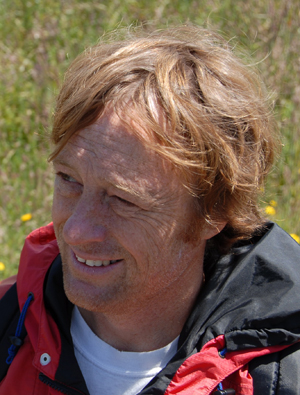Gregory J. Ward, MSc
The NewScientist article Textured Graphics can be Captured in a Flash said
“The virtual worlds in computer games provide a realistic backdrop to the action. But step too close and the effect is lost — you’ll see that textures and patterns are usually displayed on flat surfaces that look dull and artificial.A simpler way to add depth to textured surfaces could change that.
The new technique can reconstruct the depth of a surface simply by taking two photos of it — one with a flash and one without (see video). Merely analyzing the resulting shading patterns can capture the surface’s 3D texture.
Glencross and the Manchester team worked with Gregory Ward at Dolby Canada in Vancouver to develop their quick and cheap alternative.
At the heart of the technique is the assumption that the brightness of a pixel in the image is related to its depth in the real scene. Parts of the surface deep in a crack or pit receive light from a restricted area of the sky, and appear relatively dark.
Glencross and Ward presented their results at the SIGGRAPH conference in Los Angeles last week.”
Gregory J. Ward, MSc is a pioneer in realistic computer graphics, with a passion for rendering the world as we experience it. His work in lighting simulation has been at the forefront of research for over two decades, earning him the ACM SIGGRAPH Graphics Achievement Award in 2007.
As part of his Radiance rendering system, Greg introduced the notion of high dynamic range imaging, which has revolutionized the special effects and computer game industries. His Photosphere application enables HDR capture for measuring the lighting of real spaces, embracing a new era in digital photography.
Working at the Lawrence Berkeley National Laboratory, Greg developed a device for characterizing surface reflectance functions, called the imaging goniophotometer, which is now being picked up and improved by researchers at MIT. Another of his inventions is a high dynamic range stereo image viewer, whose basic operating principle is behind a new generation of HDR displays being developed by Dolby Canada (formerly BrightSide Technologies) in Vancouver.
More recently, he collaborated with the University of Manchester to come up with a simple method for capturing surface features and detail with a standard digital camera by taking advantage of two kinds of readily available lighting.
Greg authored Defining Dynamic Range, The Hopeful Future of High Dynamic Range Imaging, and Measuring and Modeling Anisotropic Reflection, and coauthored The Holodeck Ray Cache: An Interactive Rendering System for Global Illumination in Nondiffuse Environments, A Ray Tracing Solution for Diffuse Interreflection, High Dynamic Range Imaging: Acquisition, Display, and Image-Based Lighting, Rendering With Radiance: The Art And Science Of Lighting, A Perceptually Validated Model for Surface Depth Hallucination, JPEG-HDR: A Backwards-Compatible, High Dynamic Range Extension to JPEG, Detail to Attention: Exploiting Visual Tasks for Selective Rendering, and Picture Perfect RGB Rendering Using Spectral Prefiltering and Sharp Color Primaries.
Although his work has focused on computer graphics and human vision, Greg has a broader interest in where technology is taking us as a species and the effects it is having on our planet. Too little thought is given to where things may lead, and our progression towards a globe-spanning monoculture makes us highly vulnerable to diseases of the body, the mind, and even the soul.
Life is robust only insofar as life is diverse, and this applies at all levels. A single species of algae can wipe out an ocean ecosystem, depriving other organisms of the resources they need to survive. Cancer is another example of too little diversity demanding too many resources, and the ideal of bringing a Western style of living to the whole human population is just as dangerous. What we need is more diversity, not less.
What does it mean to be human, if not the ability to see where we are going and do something about it? Let’s explore sustainable living, and promote different cultures rather than beating them down or swallowing them up. The potential is here, but the reality of peaceful coexistence doesn’t seem to be on the map. We need a new map, one based on an understanding of who we are and where we need to go, not what’s the coolest new tech on the block.
What is the coolest old tech? What tech can we, and must we do without? How can we balance human desires and ambitions against an uncertain future? These are questions we need to ask, or we’ll find ourselves out of road sooner than we think.
Greg earned his Bachelor of Arts in Physics from the University of California at Berkeley, CA in 1983 and his Master of Science in Computer Science from San Francisco State University, San Francisco, CA in 1985 with his thesis “UGEDIT, An Interactive 3D Geometric Editor”.
